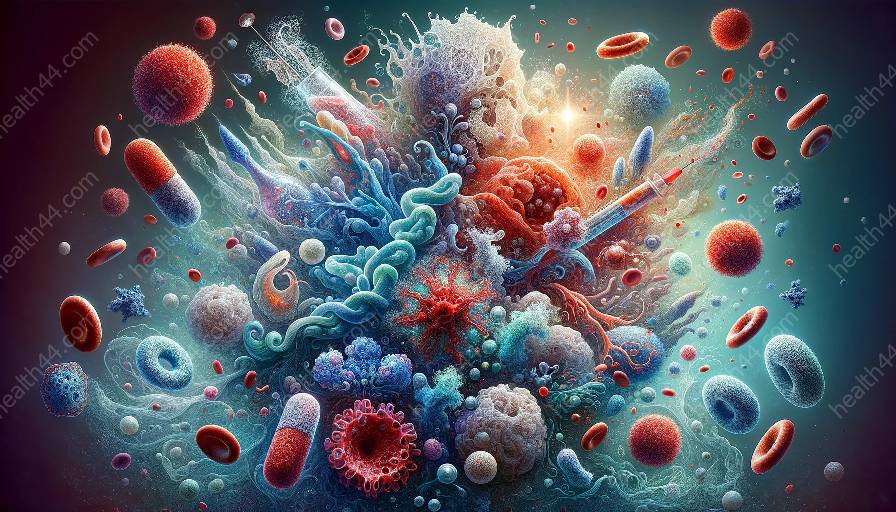Immunoglobulins (Ig), also known as antibodies, play a pivotal role in the immune system's ability to recognize and clear pathogens. This fundamental process is the cornerstone of immunology and is essential for maintaining overall health and well-being.
Understanding Immunoglobulins (Ig)
Immunoglobulins are glycoprotein molecules produced by plasma cells, a type of white blood cell, and are an integral part of the humoral immune system. These Y-shaped proteins are immensely diverse, with each type of Ig specifically designed to recognize and bind to unique antigens, such as pathogens or foreign substances.
Recognition of Pathogens by Immunoglobulins
When a pathogen enters the body, the immune system must swiftly identify and respond to the threat. Immunoglobulins serve as the first line of defense in this process, as they are specifically tailored to recognize and bind to antigens present on the surface of pathogens. This recognition triggers a cascade of immune responses, leading to the neutralization and elimination of the invading pathogen.
Antibody-Antigen Binding
The interaction between an immunoglobulin and its corresponding antigen is a highly specific and selective process. The variable regions of the Ig molecule form a binding site that complements the shape and chemical composition of the antigen, resulting in a strong and specific interaction. This precise binding is essential for the effective recognition and targeting of pathogens.
Activation of Immune Responses
Upon binding to a pathogen, immunoglobulins initiate various immune effector mechanisms to neutralize and eliminate the invader. These mechanisms include the activation of complement proteins, opsonization, and the recruitment of immune cells to the site of infection. Through these processes, immunoglobulins play a crucial role in orchestrating a coordinated immune response.
The Clearance of Pathogens
Clearance of pathogens by immunoglobulins involves their direct or indirect destruction and removal from the body. The binding of antibodies to antigens can lead to the inactivation of pathogens, making them more susceptible to phagocytosis by immune cells. Additionally, immunoglobulins can facilitate the clearance of pathogens through the activation of complement proteins, which form membrane attack complexes leading to lysis of the pathogen.
Memory and Long-Term Protection
One of the remarkable features of immunoglobulins is their ability to confer long-term protection against specific pathogens. Upon encountering a pathogen for the first time, the immune system generates memory B cells that can rapidly produce high-affinity antibodies upon re-exposure to the same pathogen. This memory response provides a faster and more robust clearance of the pathogen, contributing to the body's immune memory and long-term protection.
Impact on Human Health
The process of pathogen recognition and clearance by immunoglobulins is of utmost importance for human health. Deficiencies in immunoglobulin production or function can lead to increased susceptibility to infections, autoimmune disorders, and other immunological complications. Conversely, an overactive immune response mediated by immunoglobulins can result in hypersensitivity reactions and autoimmune diseases. Understanding the intricate balance of immunoglobulin function is crucial in developing effective strategies for combating infectious diseases and maintaining immune homeostasis.
Conclusion
Immunoglobulins play a fundamental role in the recognition and clearance of pathogens in immunology. Their specificity, diversity, and orchestration of immune responses make them essential components of the immune system. By understanding the complex interplay of immunoglobulins in pathogen recognition and clearance, researchers and healthcare professionals can develop targeted interventions to bolster the immune response and combat a wide range of infectious diseases.


